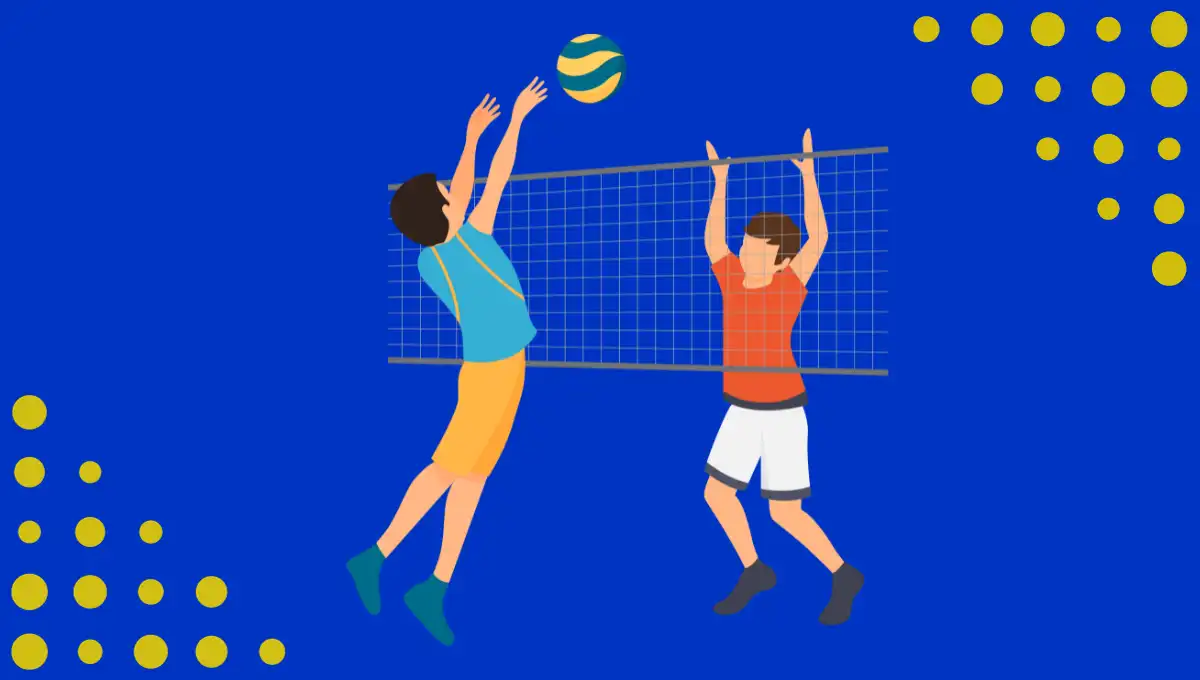Volleyball is a famous game that revolves around teamwork and strategy, where each player has a specific role to fulfill. They work together to pass the ball over the net, trying to score points by making the ball touch the ground on the other team’s side of the court.
New players often wonder how many players are there in volleyball. Each team consists of six players, with the option to have up to six substitute players. However, only six players are allowed on the court at any given time. But in this article, we will discuss the different roles and positions of players in volleyball.
Standard Volleyball Team Composition
Indoor volleyball typically features two teams, each with six players. The players are strategically positioned with three in the front row and three in the back row, allowing for optimal coverage and coordination during the game.
On the other hand, beach volleyball is a sport that involves teams of only two players. This smaller team size in beach volleyball demands high levels of versatility and stamina from the players, as they cover a similar court size with fewer teammates.
Substitute Volleyball Players
In volleyball, each team is allowed to have up to six substitute players. This allowance brings the total potential team size to 12 players for a match. The use of substitutes provides teams with tactical flexibility and the ability to adapt to different play styles or respond to fatigue and injuries during the game.
Team Differences at Various Levels
At the highest levels of indoor volleyball, teams often have more than the standard 12 players, including a larger squad. This expanded team composition allows for greater strategic depth, with specialists for specific roles or situations. It also provides a buffer against injuries and enables rotation to maintain player fitness over long seasons or tournaments.
Beach Volleyball Team Composition
Beach volleyball features two teams, each comprising two players, a configuration that perfectly suits the unique playing conditions of the sport. The smaller team size is well-suited for the reduced court dimensions in beach volleyball, in contrast to indoor volleyball.
This setup demands that each player be highly versatile, as they cover various roles like attacking, defending, and setting. The different styles of play in beach volleyball, including the challenge of moving and jumping on sand, necessitate this leaner team composition for effective gameplay.
Final Thoughts
A proper volleyball squad, typically consisting of 12 to 14 players, ensures tactical flexibility and depth. A well-composed squad can adapt to various play styles and maintain high-performance levels throughout matches and tournaments. Now, set up your team as you know how many players are involved in volleyball and understand the significance of proper team composition.
Frequently Asked Questions
Can a volleyball team play with less than six players?
Yes, a volleyball team can play with fewer than six players, but they must maintain rotational order and face penalties like a loss of rotation or service.
How Many Volleyball Players On Court At Once?
In indoor volleyball, each team has six players on the court simultaneously, split into three front-row and three back-row players. In beach volleyball, there are only two players per team on the court, reflecting the sport’s different dynamics and smaller playing area.
How Many Players Are in A Volleyball Squad?
A volleyball squad typically consists of 12 to 14 players, allowing for a mix of starters and substitutes. This number can vary, especially in professional or international teams, where squads might be larger to accommodate strategic and injury-related needs.




